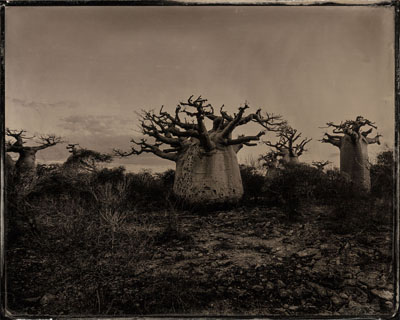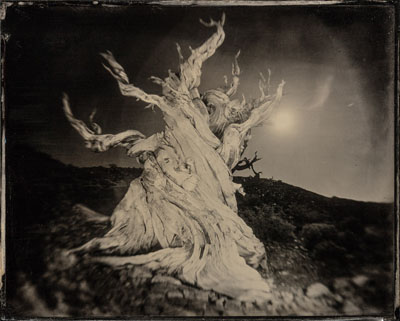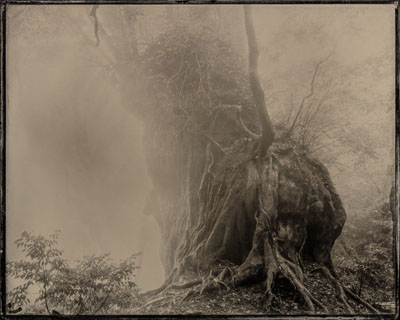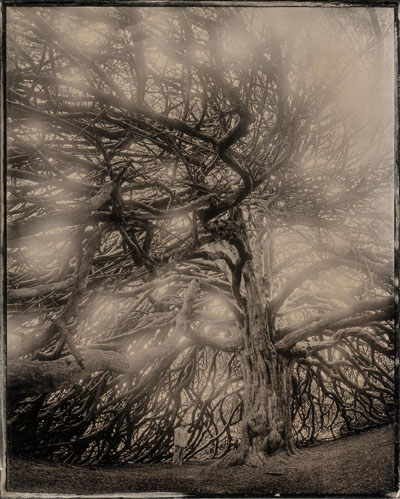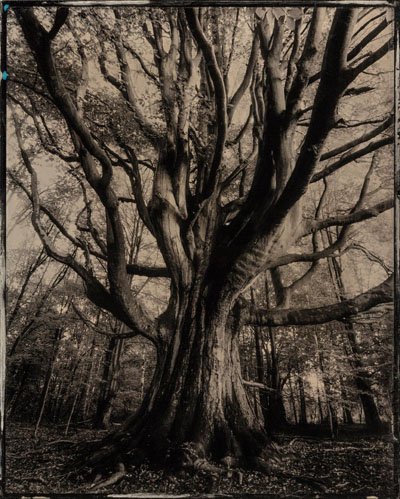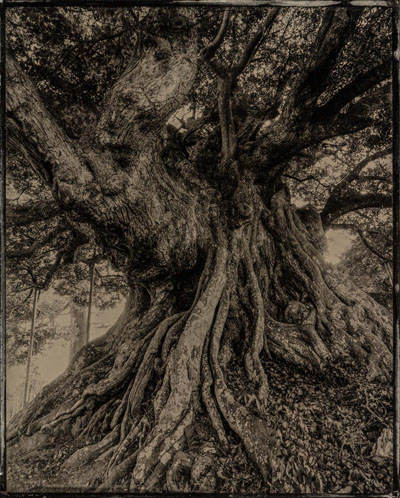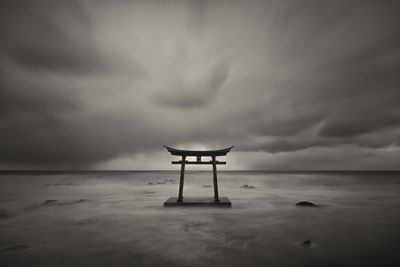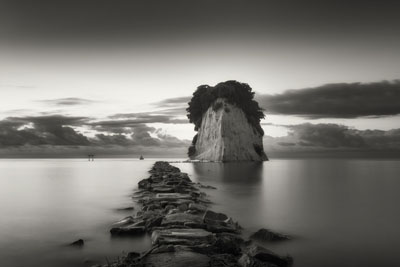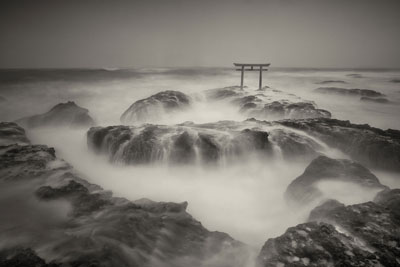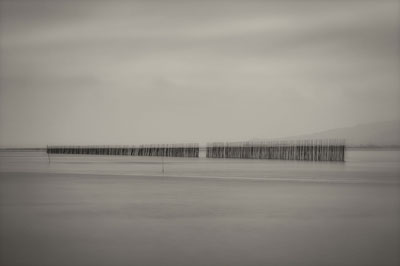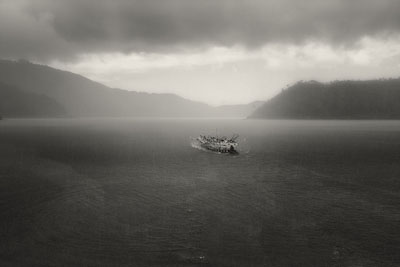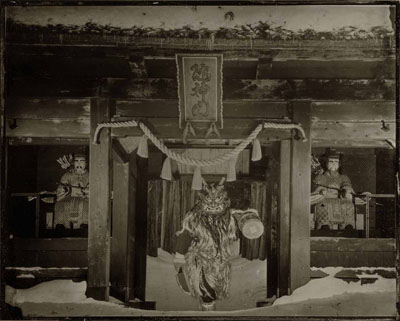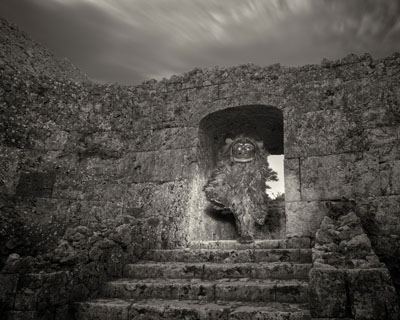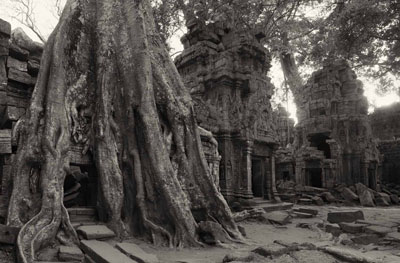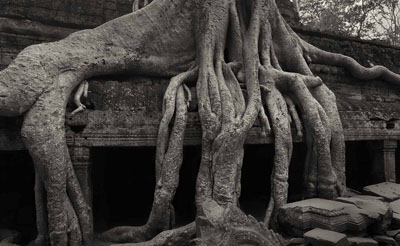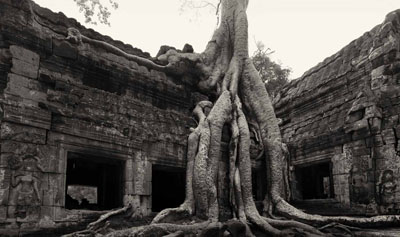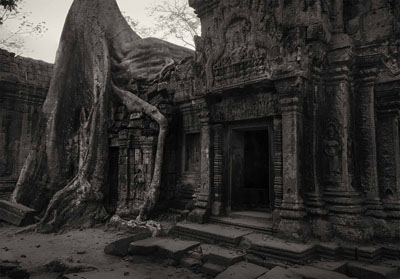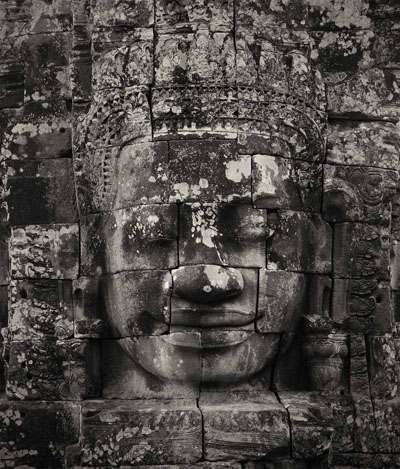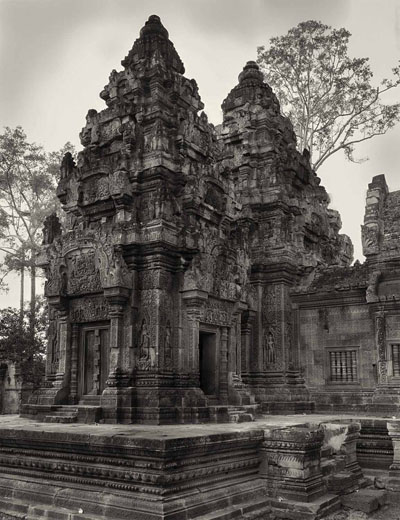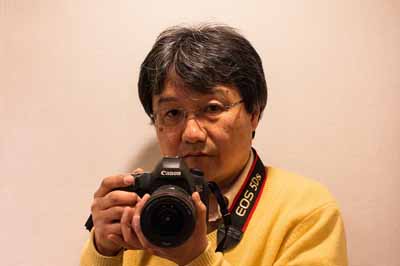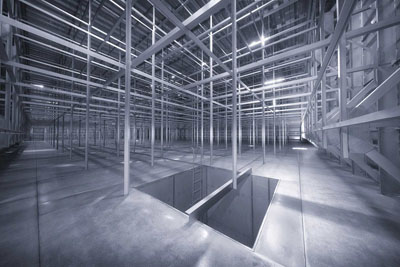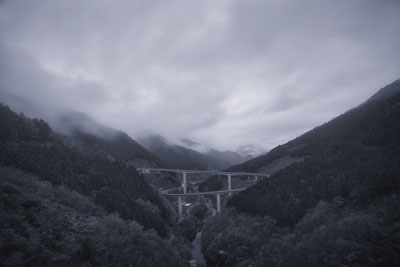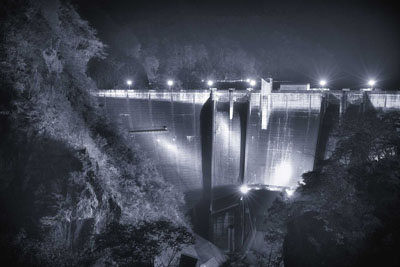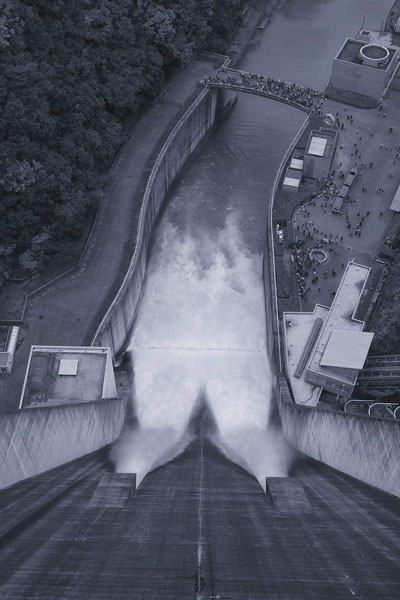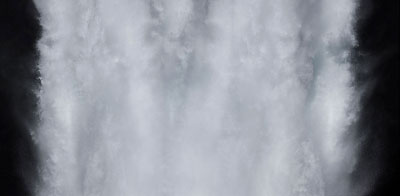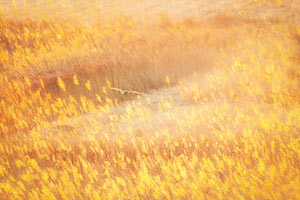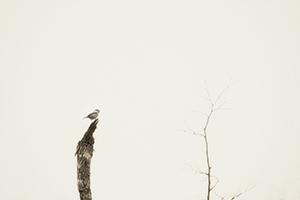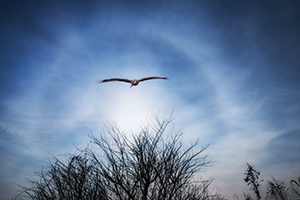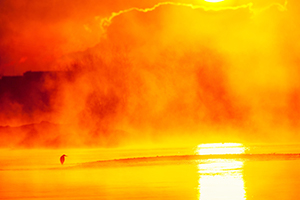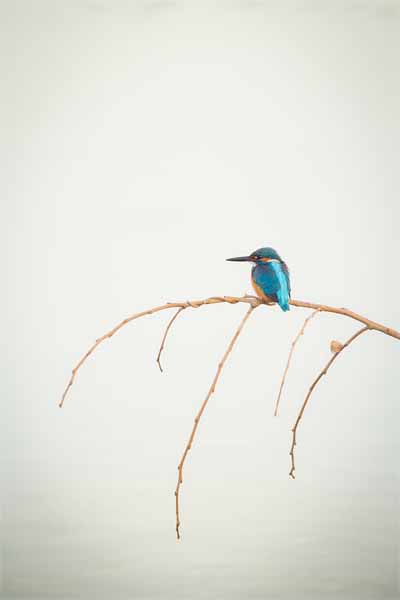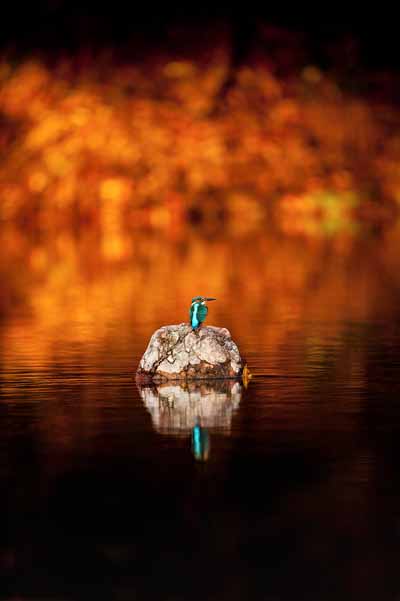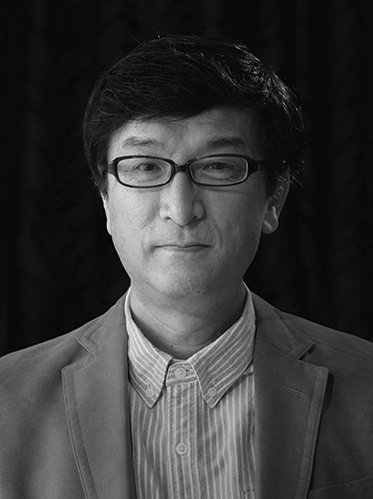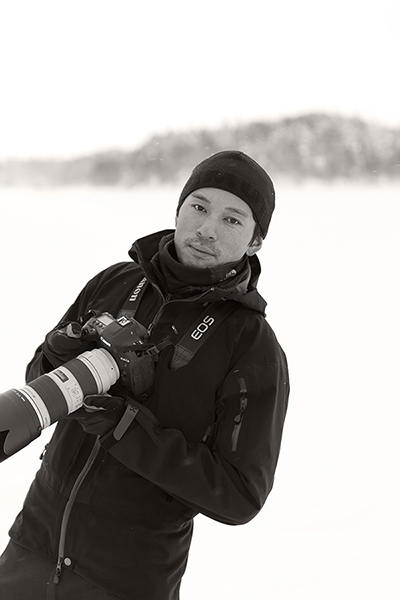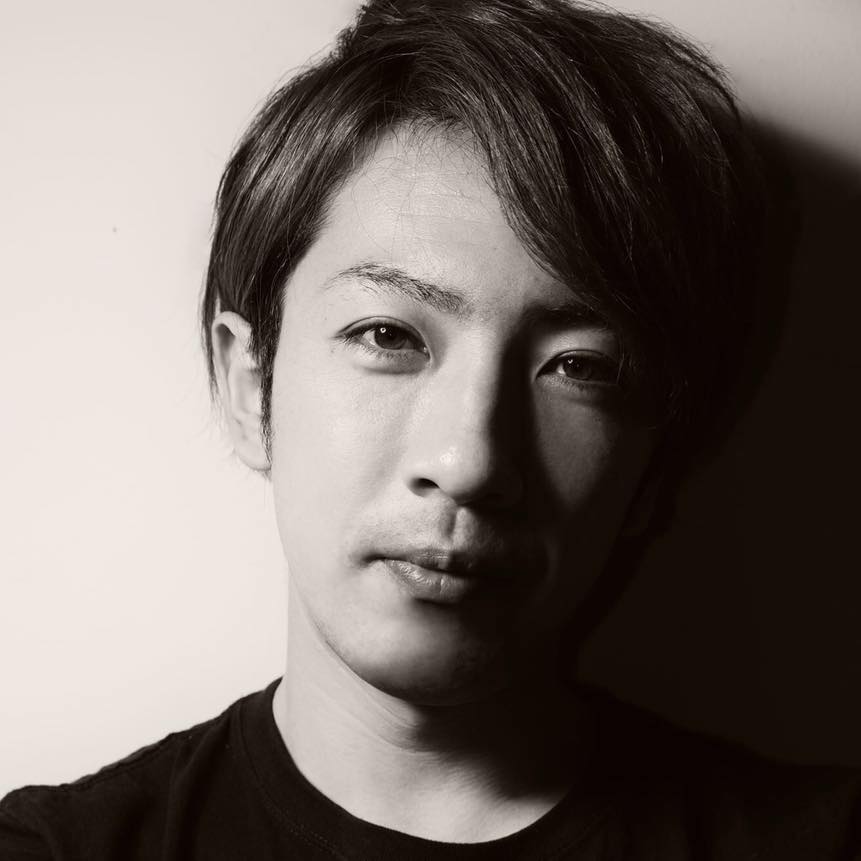Strive for a dream; To build a cultural bridge between the world and Japan
さまざまな国との架け橋になることを目指して
SAMURAI FOTO is a photography club in Japan. We want to spread our delicate and fine art prints which are made based on traditional Japanese culture to the world. We have joined aggressively Portfolio reviews in abroad. Through the communication with many people who involve in the photography, our activities show successful results. Some of the members got to make contracts with gallery owners, and others were invited to International Photo Festivals and sometimes appeared in foreign media. Moreover, some other members’ artworks were added to museum’s collections. The social contribution through photographic art with abroad is one of SAMURAI FOTO’s goals.
SAMURAI FOTOは日本の伝統文化を礎とした繊細で精密なアートプリント作品を世界に広めたいと設立されたグループです。積極的に海外のポートフォリオレビューなどに挑戦することで、ギャラリーとの契約や美術館での所蔵、国際写真フェスティバルへの参加をはじめ、さまざまな海外メディアにも露出してきました。日本と他の国とフォトグラフィック・アートで繋がることで社会貢献することを目的としています。
Photo Artist / 写真作家
Shigeru Yoshida / 吉田 繁
Praying heals our sorrows and gives us calmn and hope. And it has a power to give us courage to survive. I thought so right after the Great East Japan earthquake in 2011. I saw many people prayed toward the sea. They were mourning the lives that had been lost by the tsunami and at the same time, they tried to mollify their sorrows by praying. They prayed to overcome the tragedy and will find hope for tomorrow in prayers. Since then, I’ve tried to express the hidden power of prayer through my photography. Through my journey I found the scenery of people praying and Japanese festivals as prayers. I hope people get some positive message from my photographs.
Spiritual Tree
From ancient times, it has been believed that the gods live in the woods, the forests, the sea, the rivers, the water falls and the big rocks in Japan. This is Shinto, which is indigenous faith of the Japanese people. People in Japan have worshiped nature and have had a sense of animism. Even now it is deeply rooted in Japanese people’s lives. He has been focusing the mind of pray and to show the strong vibration radiating from the nature. (Ambrotype print and pigment archival print)
○ Print size A3(29.7x420mm) Mat size 16x20inch (40.6x50.8mm) Edition 15
BORDER
In March 2011, Japan had a big disaster, the Great East Japan Earthquake. More than 20 thousand people’s lives were taken by the quake and the tsunami. When I visited the stricken area, I saw a lot of people were praying toward the sea. I was inspired by the scene, and since. At that time I decided to start the photographic project ‘BORDER’ as a dedication to those prayers.
(Fresco Type Print)
○ Print size A2 (42.0x59.4mm) Mat size 24x30inch (61.0x76.2mm) edition 10
○ Print size A3+(32.9x48.3mm) Mat size 20x24inch (50.8x61.0mm) edition 15
Youkai No Kuni
Youkai come from the old Japanese animistic religion, and have appeared in Japanese history for over a millennium. They are believed to live in another dimension and said to be a kind of multitudinous gods. I think people have a good and bad side. As almost all people are self-centered, we are unconscious about our own weaknesses. We might keep the balance of our lives by seeing the objectivized Youkai in the festivals.
(Japanese handmade washi print)
○ Print size A3(29.7x420mm) Mat size 16x20inch (40.6x50.8mm) Edition 15
Angkor Wat Ruins - Space of Healing
Many heritage is built with the human's wish, after completion,it become a place with human's prayer and soul. Therefore the holiness remains even after year and years go by. As the building gets old and more people visit the place, the more powerful of the spiritual aura it gets. After that time, I had been fascinatede with what humans make with wished and prayers.
(Japanese handmade washi print)
○ Print size A3(29.7x420mm) Mat size 16x20inch (40.6x50.8mm) Edition 15
Hiroaki Hasumi / 蓮見 浩明
As a motorcycle engineer with nearly 40-year-carrer, I have researched and developed many kinds of the latest models at all times. I’ve been wondering if it’s all right to pursuit of the latest things only. In modern society, people hold onto their belongings, there are always conflicts around them. I’m afraid that Japanese good old spirits seem to be left behind the times. I’ve chosen the cherry blossoms and karesansui garden as the objects of my photography. It’s because that those two are the best to express the Japanese spirits. I’m grateful if my artworks help to make the world creatively rich and a place where people respect each other.
SAMADHI
Karesansui or dry landscape garden is one of the Japanese traditional gardens which were developed at temples of Zen Buddhism in Muromachi era (1338-1573). It is mainly constructed with rock arrangements and white sand. It expresses symbolically a mountain and a river without water. I just sat down quietly in front of the garden for a long time. While I was looking through this simple garden, I felt as if I was floating in the air and looking down on nature. Karesansui is the garden which is made in the simplest style. You’ll see the spiritual state of nothingness. As civilization progresses, people become attached to their belongings. Therefore, there are incessant conflicts in this modern world. I think Karesansui can release us from daily suffering.
Nippon
The cherry blossoms, which bloom all together early in the spring and after the short full bloom, they fall gracefully all at once. They once were loved by shogun or general and noble family. Then the cherry blossoms had been planted one after another all over Japan in the late 1800s. This blossom became widespread among the common people and became the spirit of our hearts. During the World War I and II, the cherry blossoms became a symbol of the military virtue of which they live gracefully and never be scared of death. After the war, people warmly accepted as an emissary of spring and it became a symbol of the reconstruction and the peace. The cherry blossom keeps changing its existence value with the times. And it has remained in a broken line as the Japanese symbol until today. And it is figuratively expressed as the sense of beauty and the view of life of Japanese people. I want to express those sense by using Japanese traditional technique in a new digital art of the photographs.
sakura ism
It’s been 5 years since I started taking photos of cherry blossoms. One day, I saw cherry trees at midwinter. The tree in the gathering dusk looked completely different from the image of full bloom in spring time but seemed full of spirit. There, I saw the cherry blossom’s true way of life. Then I’ve started to study the history of cherry blossom as a plant. In the late 1800s, people created a new variety of cherry tree, called Somei-yoshino or Yoshino cherry. Somei-yoshino grows faster than the original species and has a lot of flowers. Since then, they’ve spread throughout Japan. But as it is a self-incompatible, it can’t leave the same species. Somei-yoshino, that we all enjoy in spring time are all clones. I wonder it is a grandiose plan that the cherry blossom carry out to survive. In my photographs of cherry trees in winter, I tried to highlight the strategy for survival that living things potentially have.
Everett Kennedy Brown
My work explores the perspective of the sublime. It is the perspective that is outside of us, which I feel is becoming lost in our time. With the Internet of Everything, we are becoming more interconnected and less able to see outside our evermore enmeshed shared world view. We are losing the ability to see things as they, objects standing alone in the world, in this ever growing world of connectedness. My work is an exploration of the other, the singular, that exists in an infinitely sublime world that exists outside ourselves.
Ancient Japanese Landscapes
Landscapes hold human memory, even very wild places. Memories of ancient people are sleeping in the rocks and trees. For centuries, poets, musicians and shamans have celebrated these memories. Unfortunately, this sensibility is now being quickly forgotten. I have sought in these images to awaken the memories of the ancient travelers to Japan. Some of those travelers arrived from Russia, walking over land and ice, more than ten thousand years ago. There were also ancient mariners, who arrived from the south by sea. What were these ancient traveler’s first impressions of this land of many islands, forests and mountains? I sought answers to this question as I travelled throughout Japan seeking out the little known wild places that continue to radiate the spirit of ancient memory. These images were created using collodion glass negatives, hand stained washi paper and other techniques that were influenced by 13th century Chinese pen and ink drawings and 17th century European chiaroscuro painting, I present these images as an ancient and decaying portfolio waiting to be discovered.
IKEBANA
This series of Ikebana flower images were a collaborative project with the 21st generation Ikebana flower master, Socho Fujiwara. We photographed several days every month for a year on the estate of Sankei Hara, an early 20th century silk merchant and industrialist. This project was commissioned by the Sankeien Foundation in homage to the spirit of Sankei Hara, one of Japan’s great patrons of the arts.
The images were made on collodion wet plate glass negatives and printed on handmade washi paper.
○ Print size 320x330mm Mat size 16x20inch (40.6x50.8mm) Edition 10
Japanese Aristocrats
The Japanese Imperial family is said to be the oldest continuous hereditary monarchy in the world. The present emperor traces his lineage back to Emperor Jimmu, who was born in 660 BC. Besides the imperial family, there are many old families in Japan that trace their heritage back many generations. The images in this series are a selection from a continuing body of work documenting these aristocratic old families.
The portrait images of old Japanese family members wearing hereditary ceremonial costume were made using the collodion wet plate process and printed on hand made washi paper. I used this process to give the images the appearance of being historical photographs. In modern life, we tend to think of history as being of the past, but in fact history is also of the present. The figures in these images are clearly aware of their place in history and preserving their family history for future generations. The cultural meaning and importance of this series of images will develop over time.
○ Print size 320x330mm Mat size 16x20inch (40.6x50.8mm) Edition 10
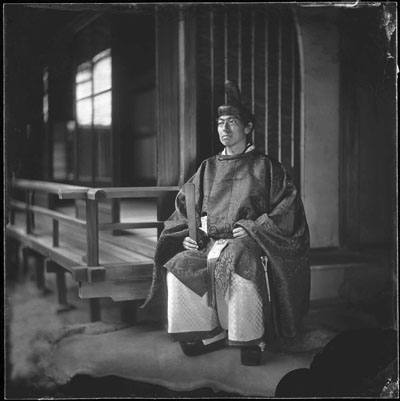
JapaneseAristrocrats01
Tadahiro Konoe, 51st generation patriarch of the Konoe clan, one of the great aristocratic families in Japan. The family dates their lineage back over 1,500 years.
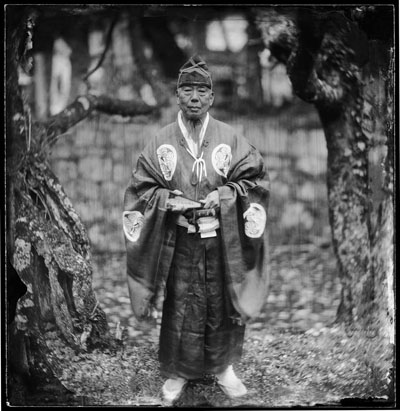
JapaneseAristrocrats02
Teruo Matsudaira, 25th generation patriarch of the Matsudaira clan. The Tokugawa clan, which ruled Japan for over 250 years during the Edo period are an offshoot of the Matsudaira clan.

JapaneseAristrocrats03
Ienobu Kaneko, son of the 34th generation patriarch of the 1,000 year old Kaneko warrior clan.
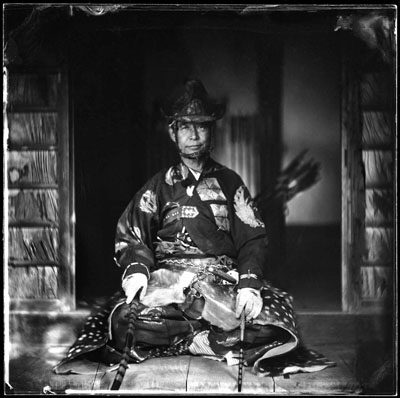
JapaneseAristrocrats04
Ietoshi Kaneko, 34th generation patriarch of the 1,000 year old Kaneko warrior clan.
Kazuhiro Sasaki / 佐々木一弘
Being involved in water supply utilities, I became very aware that the constructions which we had made were powerless in front of nature. I thought so when the Great East Japan Earth-quake occurred in 2011. Tsunami had washed out many buildings and the nuclear plants got sever damage. We still have a lot of natural disasters and earthquakes everywhere in Japan. I have taken pictures of wild birds for a long time, and they are in danger of extinction. I have been thinking of the reason and I reached a conclusion. It’s because the water circulation doesn’t work properly. But I believe that we will be able to find the best way to cope with the range of natural disasters while making use of the experiences of the technology.
Sustainable Development Ⅱ
Dams and Dikes have been built for proper water supply. Many engineers predict what the earth will be like after 50 or 100 years and design the new facilities. However, the natural threats exceed our predictions. The heavy rain disaster and the earthquake occur almost every year. Now is the time to start the construction of sustainable dams. It surely is sad the disaster happens but the engineers try to rebuild the facilities with the new technology. Even though the disaster caused a heavy damage, engineers never give up. They start over again. I hope they keep working on building sustainable dams and dike.
Proper circulation of water
Dams have been played the important parts for flood controlling, drought management and electric power generation. From a viewpoint of flood damage prevention, dams are effective for environmental protection. Reservoirs become a place for people to relax and those who are at-tracted by dams come to see them. Dam construction would destroy nature, however, it has many advantages. While seeing water controlled by dams, I think of all civil engineers and architectural engineers try hard on the permanent water circulation and nature restoration by minimizing loss of nature.
No nature, No birds
In Japan, there is a word ‘Kacho-Fugetsu’ (花鳥風月), which means the beauty of nature; flower, birds, wind and moon. Especially, the birds have been essential to express the beauty of Japanese scenery since olden days. However, because of the destruction of nature, the numbers of wild bird decreased, especially in big cities. One day, I found a small kingfisher in a corner of Tokyo. It is referred to as a gem of a mountain stream. The birds have survived in a natural habitat that remains slightly in Tokyo, with adapting to a changing environment. I pose a problem for the environmental issues through my photographs of the beautiful kingfisher. I hope people will care for nature more and take back the world where we can coexist with wild birds just like the old days.
Noriko Aoyama / 青山 紀子
I create artworks to maintain my balance. I’ve been struggling with many negative feelings such as the conflicted feeling toward my parents, the cooped-up feeling caused by a small prejudice that I got from people, the hardship as a woman, the fear for aging and death. I put them in deep inside my subconscious mind to survive and I thought I’ve already got over them. However, they always come up in my artworks when I express the details of nature and something symbolic with a tense feeling. When I face those past memories revealing in my artworks, I feel like I’m finally released from my negative feelings. I hope my artworks can help someone who is now having a hard time and trying to keep the balance of life.
Articulating the Subconscious Mind
I have been caught up in dark feelings like sorrow and emptiness which have rankled me since my childhood. However, when I wander around the wilderness taking pictures, I can set myself free from my somber mood. It gradually became apparent that I had forgotten about the names and meanings of rocks, water and earth, as though I was simply capturing them as patterns or phenomena. It resembles a surrealist attempting to access subconscious content, transcending the dominance of reasoning by going beyond the ordinary concept of things. What I found were complicated and mixed feelings toward my dominating, authoritarian father and an excessively submissive mother who always had to surrender herself to him. It was by recognizing this, that my negative feelings disappeared. I'm going to keep confronting myself by exploring my subconscious.
Michiko Chiyoda / 千代田 路子
She has created her works based on experiences and findings occurring in
her personal daily life, with which she believes to be able to reach some universal
understandings.
She very much takes care of stories in her works, and also for pursuing impressive beauty
of printing, uses various kinds of “Washi”, sensitive Japanese paper.
Her performance record has included personal and group exhibitions, adoptions by
domestic and international photo media, awards of photo contests, and permanent
collections of museums.
Mather
After a long struggle with sickness, my mother passed away. Since then I have made a lotof trips, being captured by undigested mixed feeling. People individually have some irreplaceable departed souls, who might be their family members, beloved partners, friends, or patrons of life.They are unforgettable, and so, could easily come back to your mind in complex ways as if you were obsessed by them all the time. I might be able to describe those my trips as pilgrimage in order to face my mixed feeling on my mother. I had tried to search my heart, setting myself out from daily life, and I suppose I had been morning for her through shooting and creating works.
Oshichi
One day, I came across the doll, represents a girl who lived through a tragic love.
The story was in 17th century, in which the girl was executed by burning due to being accused
of arson. She did it just because she was desperately eager to meet her lover, and after her execution, he became a pilgrim for her all through the rest of his life.
In the days of the journey, I could gradually feel myself empathizing his sorrow.
Nobody can avoid having some irreversible matters, and everybody is walking with the agony of them. I became to observe even wayside lily flowers in that way.
I suppose empathizing others’ sorrow could generate bonds between each other, and be a brave power of moving forward in their lives.
Starting a New Story
I found by chance, and instantly got interested in an old and strange shaped waste disposal
factory located next to my town. Then, after a while, my father passed away.
He was struggling against a disease for a long time in bed.
When I heard the creaking noise from those waste disposal factories, I recalled how my
father had worked hard, worn down, and got left like falling old leaves with crackly sound.
Those memories always made me regretted for my insufficient caring for him during the
days approaching the inevitable goodbye.
Various things are carried into this small facilities by dump trucks every day, and are processed
for being something useful again.
Standing in the grass growing thick, I see a glimmer of light under the heavy clouds.
I suppose it will come for his body and soul to be reborn as something new.
Motoko Sato / 佐藤 素子
My father, a botanical artist taught me a lot of things. I learned the importance of thinking of people’s background before judging by their looking. To see the true nature of the person means to accept everything and understand him or her. After learning oil paintings at Musashino Art University, I had devoted my life to the art education for 38 years. During my days in school as a teacher, I had learned the value of life. Some are visible and others are not. I had tried to cherish all lives. After a while, I started to take pictures. I want to express gently what I see and feel in nature in my photographs.
Dialogue avec l'invisible
In my artworks, I want to show the good shade of color of black and white rather than making the picture beautiful with gray tones. A white paper has seemingly no color but once a black line written on the paper, white color shows its presence. And the two colors become equal. Figuratively speaking, Shodo, the Japanese calligraphy, is formed with the balance between the black lines and the space of the white paper, which makes harmony of beauty. Whenever I see the sculptures of Alberto Giacometti, I strongly feel not only the visible works but also the invisible space at the same time. Black and white, being and non-being, visible things and invisible things…..if we see only one side of the things, the true figure will never come out. So I see the both side of the things and want to express the true colors of the objects.
Blue Pilgrimage
Since ancient times, the blue color of indigo dyeing has been loved by Japanese people, and they gave 48 different color names to indigo gradation colors. Cyanotype of the classical technique of blue photography connected with my memory of the dyeing techniques that I have long lasted, and I developed the indigo photograph on the silk cloth of kimono. My parents were born in Shikoku. After they died, I started the Shikoku Pilgrimage. I am walking alone the old 1,018 km road. Buddhism says, the lotus flowers bloom in the heaven, the red spider lilies flowers come down from the heaven. To visit plants and to talk with them quietly and to show them on blue silk. These are the beginnings of my new pilgrimage.
Kouji Sasaki / 佐々木 浩二
Since I was a student, I have been taking pictures of wild birds and nature. What I have cared about the most is not only the beauty of the object, such as the shapes and the colors, but also the story that nature would like to tell us. Even if the objects are artificial materials, I believe something spiritual dwell in them. We can’t tell it easily by looking, and I try to listen to the interior voice of them. In my photographs, I expressed the value of those things.
Sound of Silence
A closed elementary school building was converted into the artists’ studio. There, I saw a lot of abandoned educational materials. Books, musical instruments and chairs were weathered by years and they were all covered with dust. They were no longer used anymore but I felt there were something spiritual dwell in them. Even though they were getting rust away, the objects were still there. We believe spiritual thing dwells in the thing. I tried to express it in my photography and made it visible how those things vanishing away.
The Scream of forest
Many environmental developments have led to the destruction of nature. People don’t care about nature itself. It seems nature turns into be just a dead matter, and it is occupied by silence. One day, I lost in the forest in the deep valley. Natural world seemed to refuse to accept everything coming closer and was filled with an aura of authority. I was overwhelmed at the air in the forest. It was nature’s interior voice, telling us how they had been through their lives. We should feel their strong desire for life more. I’m afraid many of us give up expressing our own opinions and keep silence, like developed nature.
Kannon-michi
Kannon Bosatsu fulfills people’s wishes and listens to the sufferings and worries. She extends mercy to us. We affectionately call her “Kannon-sama”. We have adored and believed in her since old times. Putting the palms of hands together and pray to Kannon-sama, we attain serenity. We feel her close to us and she always heals us with her kind look. I like seeing Kannon-sama standing still along the side of the road. When I see her affectionate-looking face, one thought comes up to my mind; how do I find the peace of mind in this stressful modern society? Many people forget about themselves in daily rush. So I want them to pause in front of Kannon-sama and think of the true happiness and peace in the life.
Hiroshi Harada / 原田 浩司
I want to express the good old Japanese traditions and spirits in my artworks. When I was young, the time was in the top of highest economic boom in Japan. But soon it burst and the bubble economy was over. I was so shocked and it made an impact on my life. We have pursued massive production and convenience of things in our lives. It follows that numerous social problems are caused. For pursuing happiness in human society, we shouldn’t give priority to economic values. We have survived the economic collapse but we still have the beautiful scenery of Japan, traditions and spirits. I believe we can find a true happiness there. I try to express those wonderful Japanese sceneries in my photographs and I want my photography to give hope to the next generation.
RICE
When Japanese people started rice cropping, they would have thought of coexisting with nature first. Our ancestors had struggled to increase crop harvests within the set range of area. Rice cropping is strongly related to the religious beliefs all over Japan, and it has assumed an important role for Japanese people. As the rice is a staple food in Japan, we have valued rice fields. That is why the scenery of rice fields looks beautiful. Nowadays, the high technology sustains those sceneries. Mechanized farming has started. We can predict weather with the image from a weather satellite. We try to develop a new variety of rice which can resistant to global warming. We also use drone to spray chemicals. While keeping up the old traditions, we utilize the new technology for the rice cropping. This new way of making rice shows the Japanese-ness in this time.
ZIPANG
ZIPANG is the origin name of Japan and our country was called so in 13th century. The land of Japan is small and most of them are surrounded by mountain forests. To find a place to live, people have cultivated a bid of plain land and a small area along a river or reclaimed coastal sea area. Japan is an island nation, which is located in Far East of Asia. Although our country has a rich forest, we have little natural resources such as oil and minerals. Natural disasters like earthquake and tsunami occur very often. In spite of living in such a severe environment, we have enriched our hearts with patience and wisdom. Now is the time for us to take back the good old Japanese spirits. I’ve been taking photographs of sceneries of Japan and I’d be happy if my photographs remind people of the good old days in Japan.
Koji Murata / 村田 光司
Nowadays, natural disasters occur throughout the world and expand its damage. Heavy natural destruction is the biggest contributor to natural disasters. I strongly insist that we need to restore the respect for nature in order to live on the earth for many years to come. Also, we should be wise to know how to overcome natural disasters and live stronger… Since ancient times, numerous natural disasters have affected people in Japan. We have a feeling of awe and sacred of nature. And we have a philosophy of conquering the sadness and emptiness of the disasters. They are Japanese idealism. I want many people in the world know our spirits so as to reduce disasters and I hope my photographs help people who are in the face of adversities.
God’s Silent Messengers
Since ancient times, the Shinto-shrines have been worshiped as a place where God lives in Japan. Among them, there are many places that enshrine familiar animals as messengers of God. They are believed to appear before God and tell us God’s will instead. They stand silently near the entrance to the shrine or the warship hall and protect sanctuary area. They might watch over us for God who is invisible. As for me, they seem to warn human beings who forget the feeling of awe for nature and cause severe environmental destruction. I think they try to tell us to get back the good balance with nature and human beings for the next generation.
Mujo ~the power of positiveness~
Mujo, or impermanence, which means nothing ever stays the same. This is one of the Japanese aesthetic that we have since the Middle Ages, and it relates to the philosophy of Zen. We are living in the fleeting world. All the more reason, we know that we shouldn’t be tinged with sorrow and think of the importance of how we carry on living. We have been suffered from many natural disasters and power struggles, and so many people’s lives were lost. Even so, we have given priority to move toward the next step. Having a strong desire for things which never stay the same create suffering. Think of flowers. They bloom and can’t last forever. But it never forgets to bloom beautifully next year. In my photographs, I express sense of Mujo, the timelessness and the impermanence, which is the source of attitude of positiveness. There might be someone who is having a hard time now, but I believe the things will get better soon. I hope my photographs light up people’s lives and they start to believe in tomorrow again.
Seiji Kazui / 数井 星司
When I take pictures, I always aim to find out the story hiding behind a little daily motif, to move audiences' internal emotion and to draw out their empathy by talking through photos. Right after graduating from a design college, I had launched my own design office, and have been working for problem-solving and contribution to society by the power of design. Along with the work, I have learned photography and taken photos of sceneries of Hokkaido, which is my home. From meetings through photos, I had found a huge possibility of photography, and started expressing and seeking for internal values rather than surfaces.
The Light of The Television
Turning on a television is my routine. But this is rather for just distracting my mind from loneliness than watching. One day, only a pale light coming from the television slightly illuminated the dark room. As I was gazing at it vacantly, the room started to look like outer space and the television was like a star radiating light. Receiving the light, she, lying naked, looked like a planet floating in space. At the moment, I felt as if she would be orbiting and gone far away, and I desired to close her in my such small space. I turn on the television today as usual, waiting for the day she appears before me again...
Ryoko Hirai / 平井 良子
When I was a student, my mother had been sick. One day, we knew she had only one year left to live. In spite of the doctor’s opinion, my mother survived for 8 more years. During her long struggle with illness, I took care of her and was working frantically at a job. Even after my mother passed away, I kept working busy more than ever, because I was afraid of being crushed with loneliness. I had repressed my emotions and been in a negative mood. One day, I recalled my days with my mother, and I remembered what my mother had always said to me; ‘you are my hope.’ Suddenly, I thought that I shouldn’t be like this. It was like a sparkling moment and I breathed new life. I started to think positively toward my future. Since then, I have been working hard on my artworks and it would be wonderful if I could give hope to people with my photography.
Color – the compassion of life-
Since my mother passed away, all the colors in my life disappeared. I had lived an empty life with loneliness, sufferings and sorrow. It was as if they had controlled my life and pained my whole life with emptiness. However, I got to know that grief would soften with the lapse of time. Suddenly one day, everything in my life became filled with colors. I could finally be here because of many people’s support and I began to cherish everything surrounding me. Now, I want to convey my gratitude to all the people who had support me and given back colors into my life. I want to show all the beautiful colors of Japanese old things and I want to be the one who gives hope to people with my photography.
Shouya Kubota / 久保田 翔也
WALL
In 2011, the Great East Japan Earthquake occurred and more than 20,000 people lost their lives. As I lived in Tohoku, where the earthquake damage was severe, I became a disaster victim. After a while, reconstruction had begun. A number of huge storm surge barriers have been built along the coast. It is said the height of the barrier wall is over 15 meters, which is equivalent to a four-story building. It’s unavoidable necessity to protect people from tsunami. We can’t blame it, but I felt I was separated from the sea. It must be rough on people who have coexisted side by side with the sea. Disaster prevention is important, of course. Although I can’t help but think that losing our beautiful scenery means we lose our hope of living.
Feel free to contact us.
Nothing will make us happier than having visitors share their thoughts.

